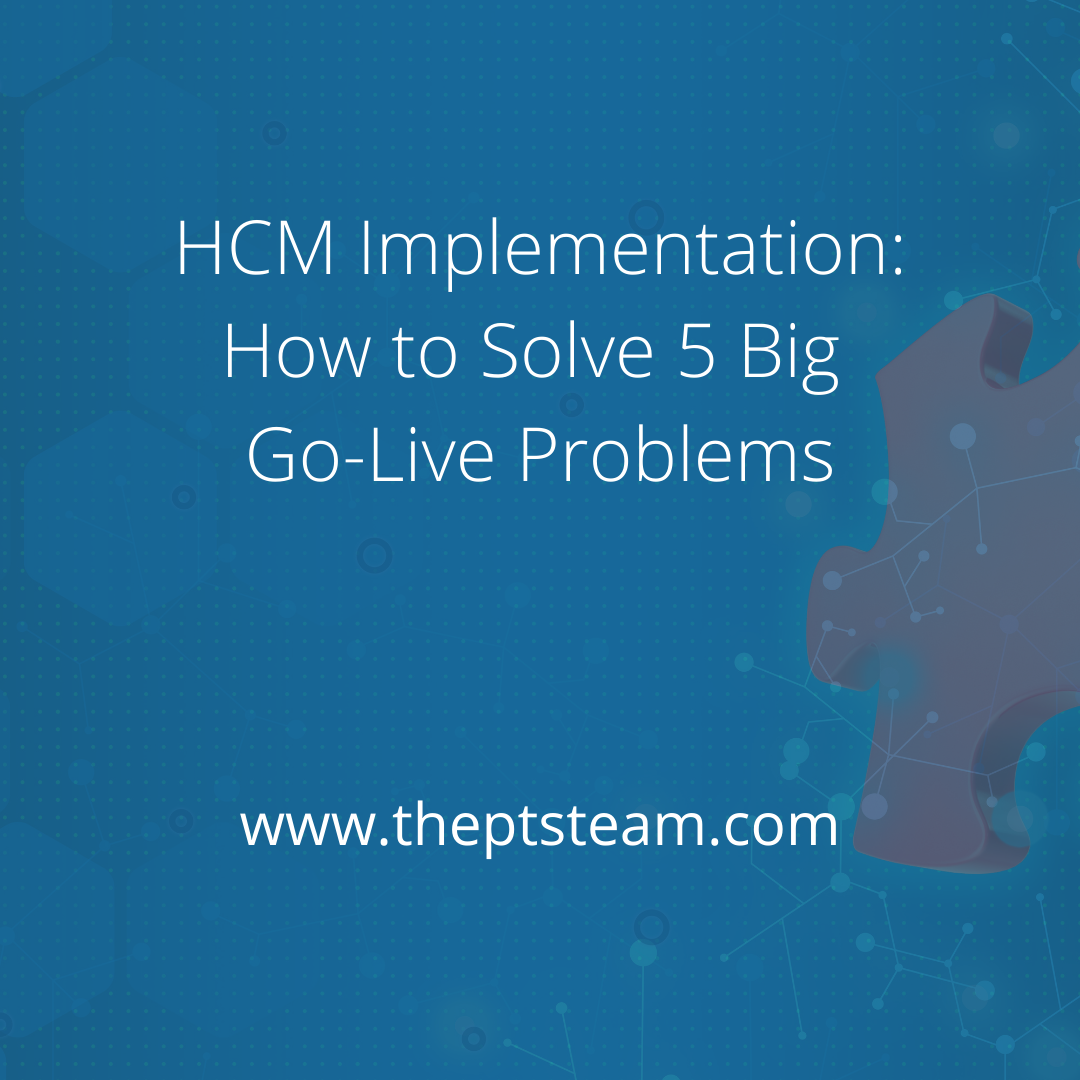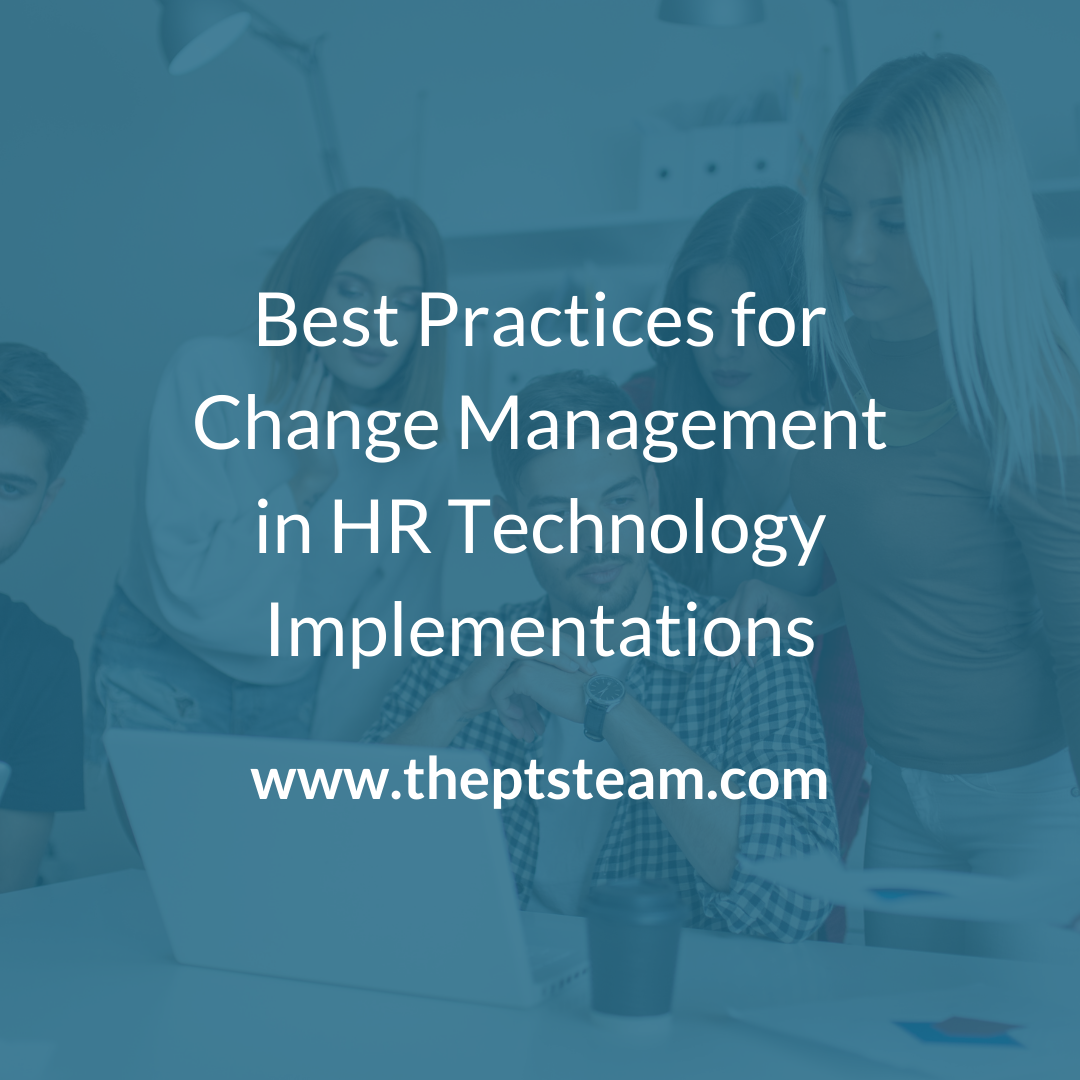The implementation of HR technology begins as soon as the solution has been purchased, if not sooner. But many organizations fail to achieve their goals because they do not implement their new HR tech properly.
Eight of 10 HR and IT executives that participated in PwC’s HR Technology Survey 2020 cited adoption challenges like lack of preparation, unclear user benefits, and poor user experiences as impediments to realizing the desired return on investment for a new solution. Similarly, a study by Computer Economics shows that the ROI and the satisfaction rating for HCM systems are well below those of other technologies because of implementation challenges
Planning an implementation in advance, or at least anticipating potential challenges and identifying possible opportunities, is key to maximizing your ROI for HR technology. Here are five things to expect.
1) Effective project management positions you for success.
Implementing HR tech involves many deadlines, milestones, and tasks. You also have many resources to manage, including your internal team as well as any external consultants or vendor personnel. Project management keeps your implementation on track.
From designing your project plan to managing and tracking tasks and monitoring timelines, effective project management is essential for implementing your solution on time and within budget. Breaking your implementation into project phases like planning, executing, and closing increases your chances for success.
Many organizations limit their ROI from the outset though by failing to redesign their processes as part of the implementation. Outlining your processes at the beginning and determining how to leverage your new solution to do them more efficiently and effectively will increase the benefits you reap while reducing the amount of post-deployment changes that you make.
You must also consider your resources. Recognizing that deploying internal IT staff for implementations diverts them from innovation and transformation efforts that would otherwise add value to their organizations, 44% of companies augment staff with onsite or remote experience through IT service providers, according to a Forrester Consulting thought leadership paper about how innovation leaders need IT Services to drive transformative outcomes
Furthermore, organizations often hire a system integrator experienced in working with their new solution rather than depending on internal resources that lack the experience and expertise needed to maximize your ROI. Almost 70% of the organizations that reported above-average satisfaction with the implementation of their cloud HCM suite in terms of integration and deployment used a third-party system integration partner, according to a Gartner survey analysis of customers’ ratings of their HCM cloud suite experience.
External HR technology implementation experts know what to expect and how to respond so that your organization achieves its goals.
2) Configuring, integrating, and testing your system properly drives efficiency.
Configuration is an important part of an HR tech implementation. Optimizing your processes and configuring your system to streamline workflows will help your organization work more efficiently. Many organizations use external consultants to unlock functionality that maximizes product value.
Integrating systems is also crucial. Overcoming common HCM integration problems will allow you to avoid disruptions caused by the need to install middleware and patch communications between best-of-breed solutions from different vendors as well as discrepancies in data that make it hard for your team to discern what is correct when information is siloed in individual systems.
Integration and testing experts customize their services and solutions so that organizations save time and money while eliminating errors and redundancies by integrating systems properly. They also support successful implementations through user acceptance and system integration testing and system functionality quality assurance.
3) Data migration determines success.
Dealing with data in your new solution is often the most difficult phase when implementing HR technology. It is also the most important given that getting better data and making more use of it is often among the primary goals of projects.
Data migration mistakes often derail implementations though because organizations underestimate the resources needed and effort involved. In fact, 83% of data migration projects fail or exceed budgets and schedules, according to Gartner.
On average, organizations with 1,500 to 2,000 employees that have a full HCM suite need a minimum of three qualified resources spending 12-15 hours per week for at least eight weeks for a data audit, clean-up, and migration project.
Data solutions providers may be able to help your subject matter experts audit, migrate, and integrate your data faster, more accurately, and at less cost.
4) Effective change management increases adoption.
Only 27% of the executives in PwC’s HR Technology Survey 2020 rated HR tech as very effective for changing behaviors at work due to implementation challenges. But employee buy-in is crucial for a successful HR technology implementation. If an employee struggles to use a new system, the organization will fail to achieve its goals for the project.
Devising a change management plan is one of the best practices for a successful HR tech implementation. Addressing key elements like training and documentation increases adoption by employees.
Involving highly skilled teams of stakeholders from across the organization helps as well. Peer support bolsters buy-in by employees.
Many organizations use change management consultants to boost employee engagement.
Consultants bring best practices for change management in HR technology implementations, as well as agile practices, proprietary tools, skills, and techniques that tailor plans to each company and its culture.
5) Extensive support smooths implementation through go-live and beyond.
Supporting employees during go-live creates a positive experience that leads them to use your new system as intended. Ensuring that you have enough support resources available to resolve issues will help you avoid go-live problems.
Engaging the HCM support services of HR technology implementation specialists enables organizations to tap the expertise of professionals accustomed to the pressures and challenges of go-lives. Companies can also benefit from post-go-live support like platform management, ACA tracking and reporting, and issue resolution.
Ongoing training and continuing education is another item that should be on your HR tech implementation checklist. Assign a system administrator to manage the solution going forward as well.
Successfully implementing HR technology makes your organization more efficient and improves the employee experience. The sooner you start the implementation the more successful it will be when it is done.
Providence Technology Solutions is a market leader in HCM technology consulting and HR process implementation and consulting. Learn how we can help you increase adoption and return on investment through our HCM Implementation Solutions.
Contact us today to discuss your open enrollment needs online, by email at info@theptsteam.com, or by calling 904.719.8264.













